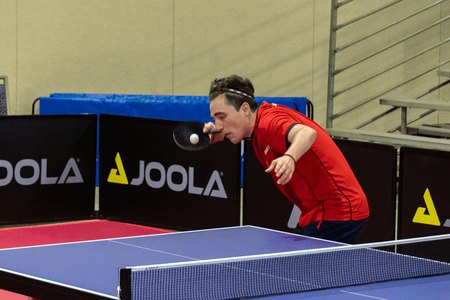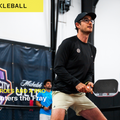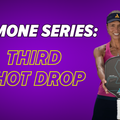
Full Body Serves by Vikash Sahu
Previously, I shared tips for receiving serves you're not sure about, but today the focus will be on serving rather than receiving. From these two articles together, I hope you can form a more complete picture about service and receive by tying together general concepts and themes.
Many people focus almost exclusively on emphasizing their arm and wrist when serving, and tend to neglect the importance of other parts of their body. However, an important principle found in table tennis is the idea of a tree trunk and branches.
The body, including the legs, serves as the trunk, while the forearm serves as a branch. A smaller branch, the wrist, is attached to the forearm. A strong trunk makes it possible to generate power from the body, and creating power from the trunk is more efficient than generating it from the branch.
Now let’s see how the body as a whole plays an impact in developing quality serves.
Trunk
Legs
Legs are important in the serve just as they are in topspin strokes. As the ball falls from the toss, you can follow the ball downward with your legs, and transfer your body weight from one leg to the other, in order to impart more force into the ball. Doing so increases the spin and speed on the ball. Further, using your legs to follow the ball downwards as it drops means a contact point that is closer to the height of the table, which will generally mean a lower bounce over the net. This makes it harder for the opponent to read the serve or attack aggressively, as it is easier to attack a ball that bounces higher.
The tomahawk serve is a great example to visualize how the legs can be important in the serve. The squatting motion as the ball falls downward is what enables the creation of heavy spin and speed.
Core
Weight transfer is an important concept for utilizing the core in the serve as well. By turning into the ball as part of the service motion, you will get more spin than just using your arm and wrist. A strong core is valuable for this, and is applicable in different service motions, like the pendulum, backhand serve, and hook serve. If you have trouble conceptualizing how to "turn" into your serve with your core or abdominal section, a different way of thinking about this is to turn into the serve with your shoulder. Using the shoulder is perhaps most noticeable with a backhand serve, where you use your shoulder and core together to aggressively "pull through" as part of the motion. By tightening your core at the moment of impact, you can generate more spin.
Branches
Fingers
I personally think that people tend to overlook the importance of the fingers in creating spin, and instead focus too much on the wrist. While it’s true that the wrist plays an important role in generating spin, a fast-moving wrist with a loose grip will be inefficient in generating spin. To use your fingers while serving, as the ball comes into contact with your racket, you can apply pressure with your fingers at the moment of contact to create more friction as part of the brushing motion with the ball. Therefore, if you are trying to create more spin, try thinking about how much pressure you tend to hold the racket with at the moment of contact, and see if you can increase it. To improve this aspect, there are various grip-strengthening exercises that you can look into.
Forearm
The idea behind using your forearm is not just to generate spin, but also to add pace to the serve. This is effective in both short and long serves.
For example, a short underspin serve which is slow is easier for the opponent to drop short or decisively push long -- there is simply more time for the opponent to make a decision and react. It may be valuable to serve slow sometimes, but serving with pace is a useful variation to have. If you use your forearm and snap into the ball, you can impart pace (meaning speed) into the short serve. For a long serve, using the forearm for speed or pace is an intuitive idea. The same concept can apply to a short serve too.
Wrist
So far in this discussion, I have focused on the parts of the body that I think tend to be overlooked when one thinks about serving. Now, let’s focus on the one that most people recognize as being important: the wrist. The main idea for the wrist is that it should accelerate into the ball as part of the grazing or brushing motion in order to generate effective spin. Naturally, a fast moving wrist is fundamental to brush the ball, and should be used in conjunction with the fingers as mentioned in the above point. You can also try to capture the feeling of “holding” contact with the ball as long as possible to generate more spin, and in contrast use a shorter duration of contact with the ball for less spin.
Developing a high-quality serve is not just about the hand that you hold the paddle with, but the rest of your body as discussed here. Broadly speaking, a strong body will never fail you in table tennis and can serve as a basis for all your strokes.
However, the game is not just physical. There are mental and emotional aspects to it as well. To become a complete player, you need to not just practice well, but also compete regularly, and practice performing under different scenarios, playing against different styles, and so on.
All the best with your training!

About Vikash Sahu
Vikash Sahu is a JOOLA-sponsored coach who has coached US National Team players at tournaments like the US Nationals, US Open, and National Youth Ranking tournaments, and earned medals together with players there.
As a player, he has recently won medals at the 2018 US Open and 2018 US Nationals, and won divisions 3 and 4 at the North American Teams Championships from 2016 to 2018. As a junior, he won several medals at the Junior Olympics and Junior Nationals.




